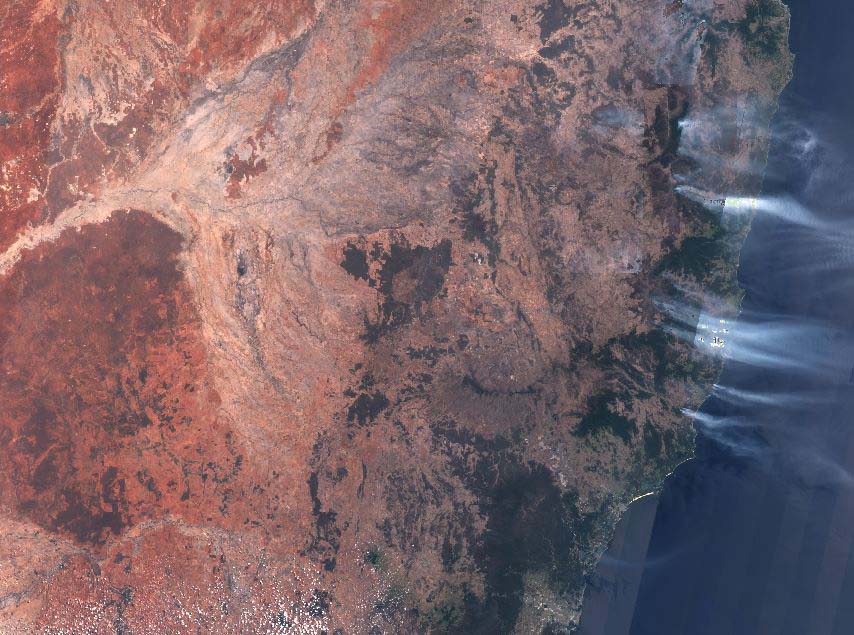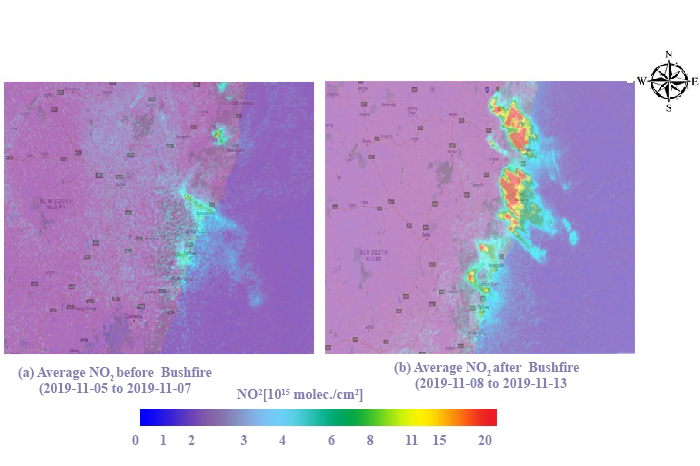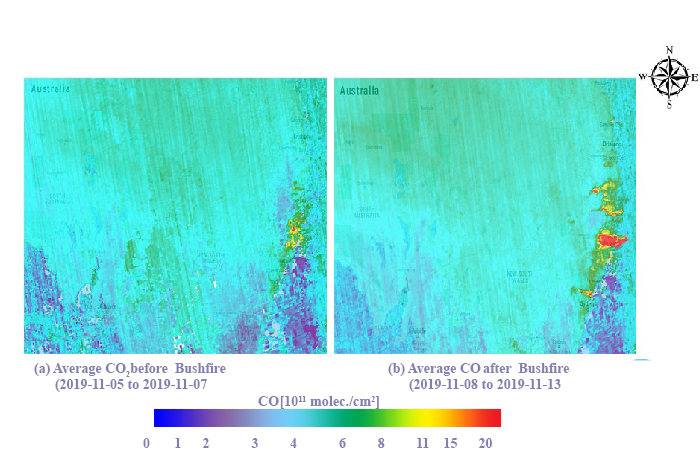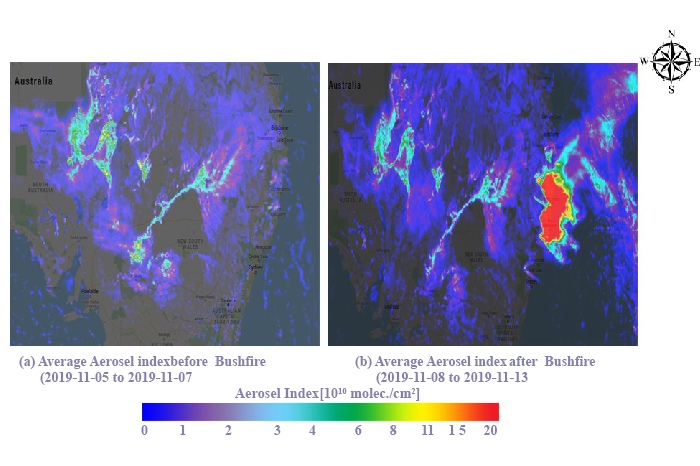
Impact on the Australian atmosphere due to massive bushfires in NSW
According to BBC bushfire also broke out in suburbs of Sydney, which is counted in the largest cities of Australia. Fire actually started from November 8th, 2019. Red rectangle over Figure 1 highlights the affected cities of Australia.

Fig.1 - Affected cities of Australia due to bush fire
As Burning of bushes counts in anthropogenic process and has been a detriment to environment. It involves the production of;
- Air pollutants, such as carbon monoxide(CO), hydrocarbons, nitrogen oxides(NO2), Sulphur oxides(SO2), ozone(O3) and other oxidants.
- Particulate pollutants like dust, fume, mist and smoke.
- Other health and environmental hazards like acid rain, the greenhouse effect, depletion of ozone layer and deforestation.
So keeping in mind these disadvantages of forest and bushfires, Remote Sensing team of National Center of Big Data and Cloud computing(NCBC) inspected Australian atmosphere using Google Earth Engine(GEE). We processed dataset(November 14, 2019) of Sentinel-2 satellite in GEE. Figure 2 shows view of Australian atmosphere through Sentinel-2 satellite and the smoke on affected cities. Furthermore, the smoke direction is from West to East due to wind direction.

Fig.2 - Smoke over affected cities using Sentinel-2
After successfull detection of bushfire in NSW that hit Sydney, we were interested in finding effects on gases of Australian atmosphere. So, we processed more datasets(No2, CO, HCHO, Aerosel Index) of Sentinel-5P satellilte in order to detect changes in composition of Australian atmosphere. Figure 3 to Figure 6 shows the dramatical change in composition of these gases over Australian atmosphere due to bushfires in NSW.

Fig.3 - Average NO2 in atmosphere of Australia

Fig.4 - Average CO in atmosphere of Australia

Fig.5 - Average HCHO in atmosphere of Australia

Fig.6 - Average Aerosel in atmosphere of Australia
Courtesy:
Courtesy of European Space Agency (ESA) SchiHub ESA and Google Earth Engine (GEE)